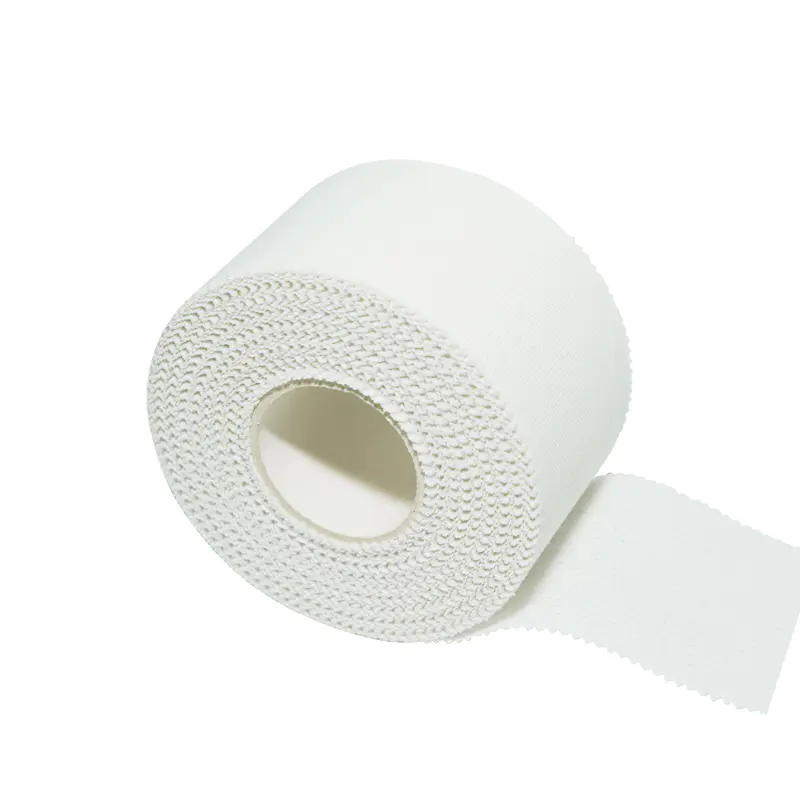Kinesiology tape, also known as elastic therapeutic tape, is a stretchy, skin-friendly adhesive strip designed to support muscles, joints, and ligaments without restricting motion. Originally developed by Japanese chiropractor Dr. Kenzo Kase in the 1970s, kinesiology tape has gained widespread popularity among athletes, physical therapists, and fitness enthusiasts around the world.
Kinesiology tape is made from a blend of cotton and spandex, featuring an acrylic adhesive that’s heat-activated and latex-free. Unlike traditional athletic tape, sports tape or muscle support tape mimics the elasticity of human skin, allowing it to move comfortably with the body. The design helps improve circulation, reduce inflammation, and provide targeted support to muscles and joints.
Key Benefits of Kinesiology Tape
Using kinesiology tape provides several key benefits:
Pain Relief
Kinesiology tape lifts the skin microscopically, which helps reduce pressure on pain receptors. This can relieve discomfort caused by injuries, overuse, or inflammation.
Enhanced Muscle Support
Whether you’re recovering from a strain or preventing muscle fatigue, muscle support tape stabilizes the area while allowing a full range of motion. This makes it ideal for sports and rehabilitation.
Reduced Swelling and Inflammation
By promoting better lymphatic drainage and blood flow, kinesiology tape helps minimize swelling and bruising after an injury or intense activity.
Improved Posture and Alignment
Therapists often use kinesiology tape to cue proper posture and correct joint alignment. It’s commonly applied to the shoulders, back, and neck to support better movement habits.
Faster Recovery
Many athletes use sports tape as part of their recovery regimen. It enhances circulation, reduces fatigue, and accelerates healing.

Common Applications of Kinesiology Tape
Kinesiology tape can be used in a wide range of situations:
Sports injuries like sprains, tendonitis, or runner’s knee
Post-surgical rehabilitation
Chronic pain conditions, such as lower back pain or arthritis
Performance support during intense workouts or competitions
Swelling management after sprains or strains
How to Apply Kinesiology Tape
Proper application is key to getting the most out of kinesiology tape. While many users apply it themselves, it’s recommended to consult a trained physiotherapist for optimal placement.
General steps include:
Clean and dry the skin before applying the tape.
Cut the tape to the needed length and round the edges to prevent peeling.
Apply with the appropriate amount of stretch, depending on the purpose (e.g., support vs. decompression).
Activate the adhesive by rubbing the tape after application.
There are different taping techniques depending on the desired effect—such as “I”, “Y”, or “X” shapes—each serving a unique function based on the muscle or joint being supported.
Is Kinesiology Tape Right for You?
Kinesiology tape is suitable for people of all ages and fitness levels. Whether you’re a professional athlete, a weekend warrior, or someone recovering from injury, elastic therapeutic tape can be a valuable tool in your health and fitness routine. It’s also hypoallergenic and breathable, making it comfortable to wear for several days at a time.







